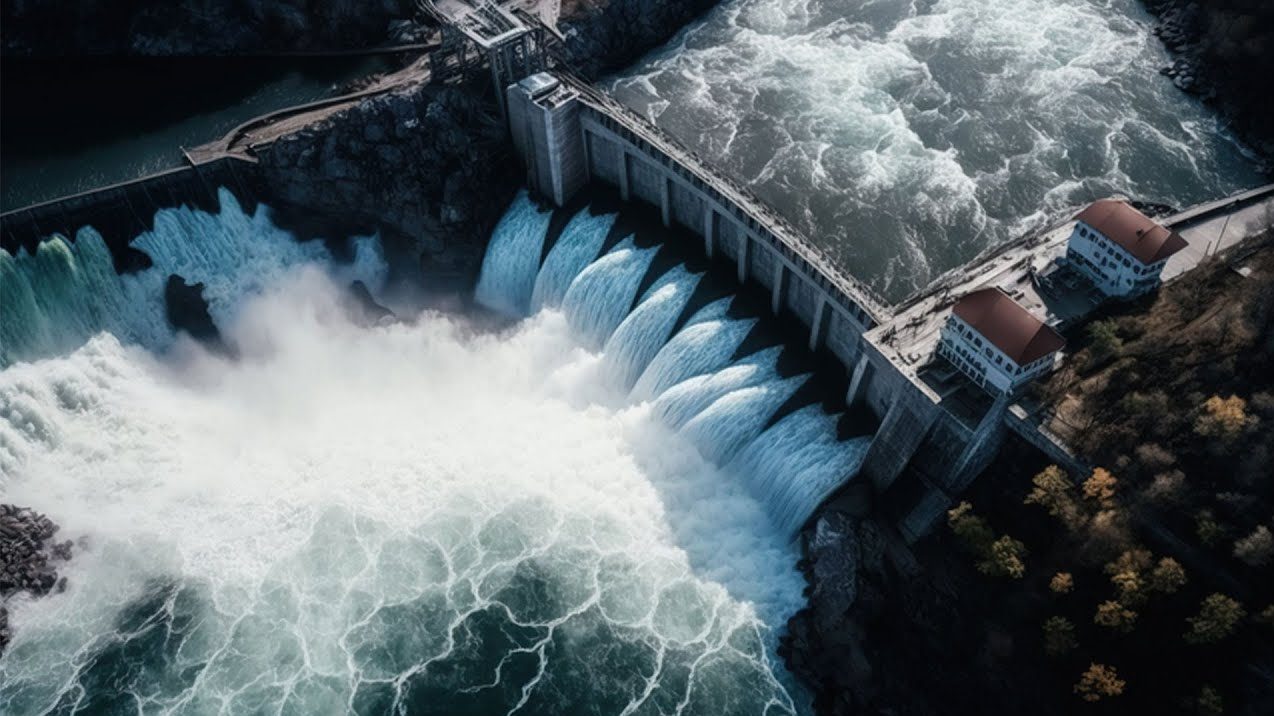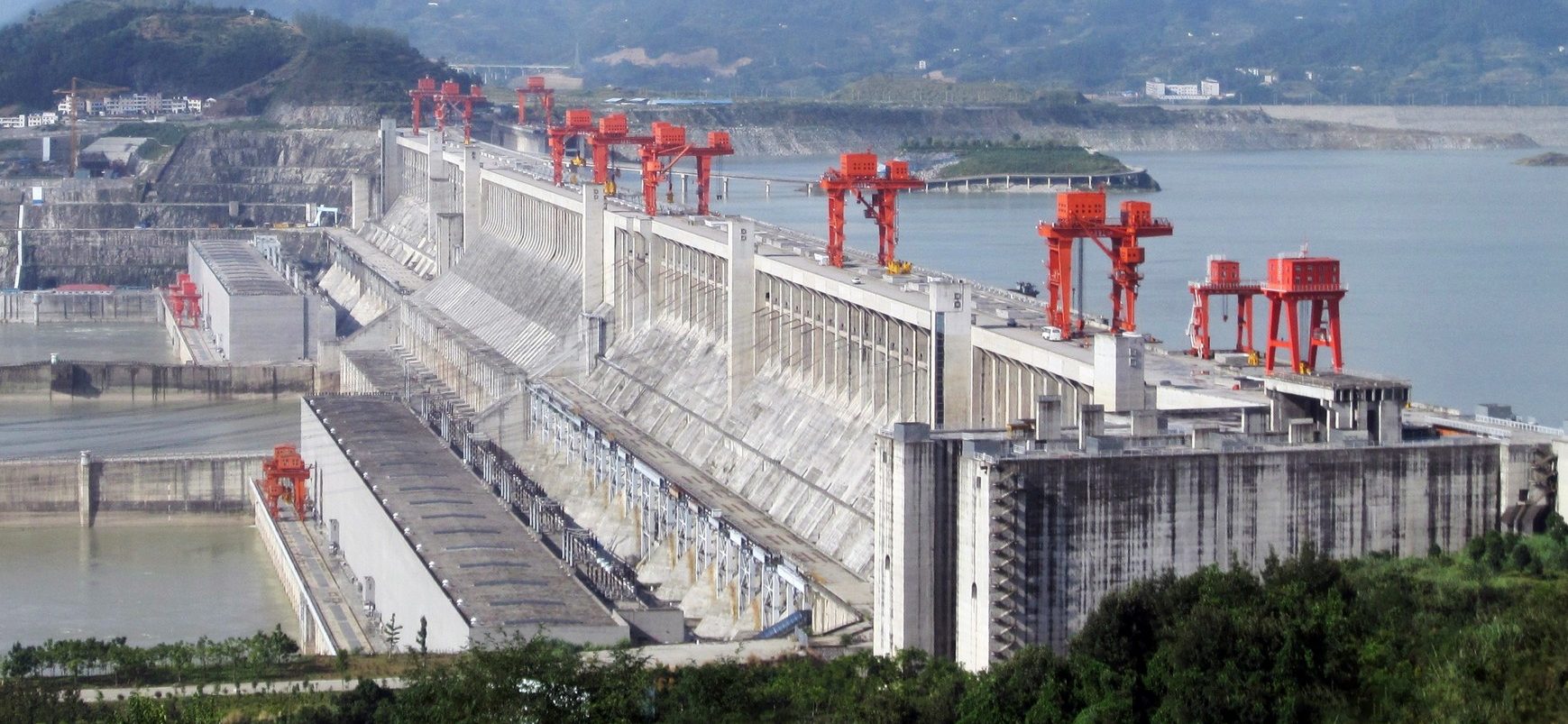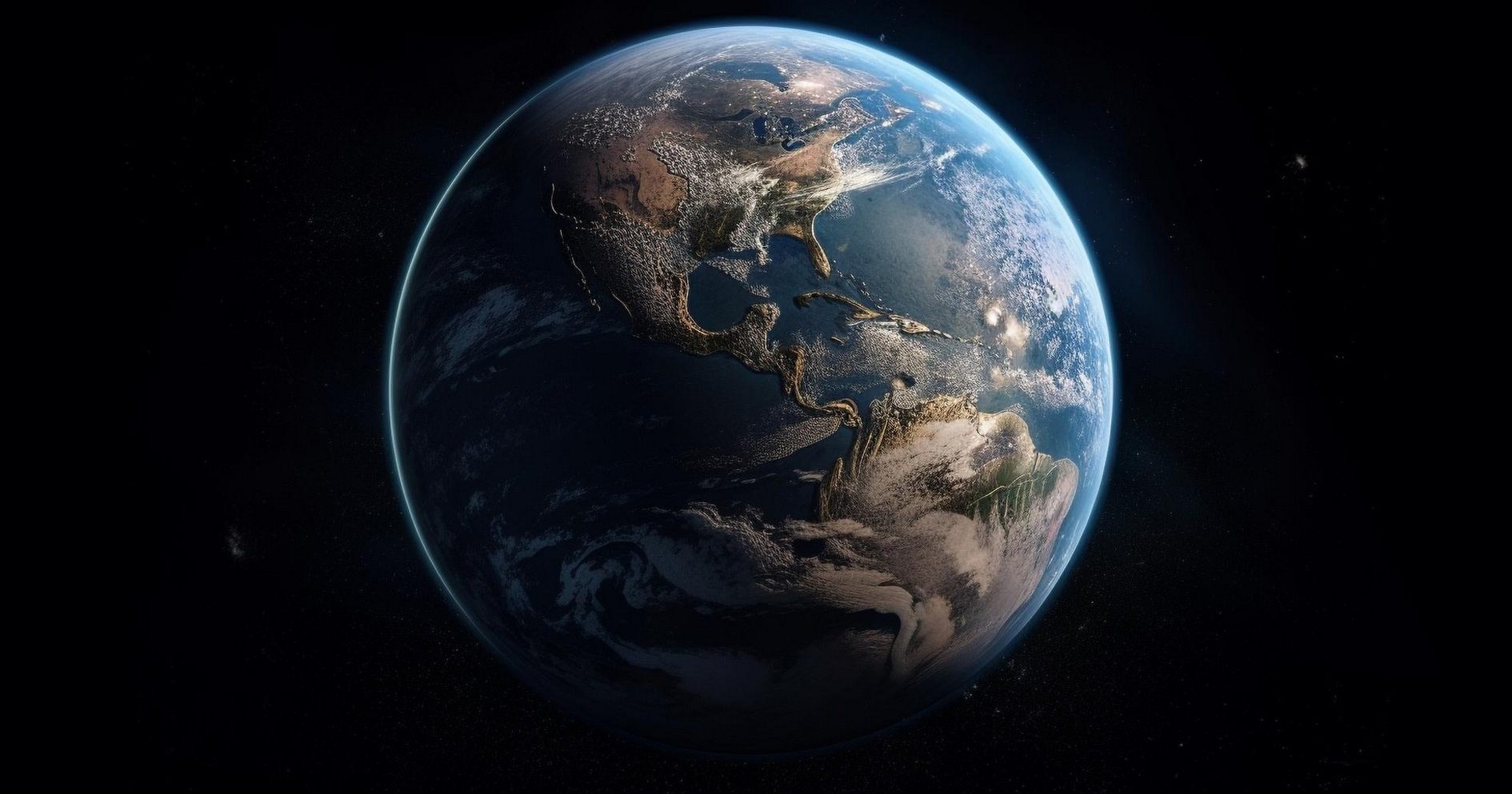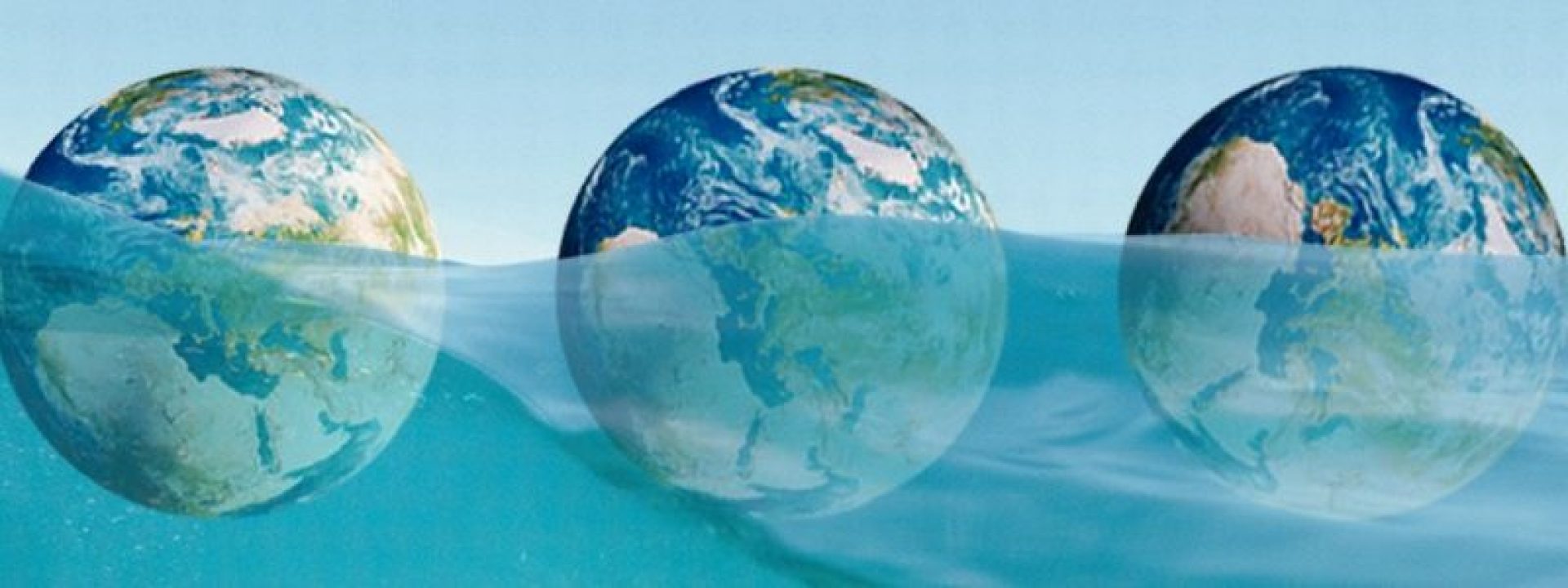
Water covers 70% of the Earth, and its volume is about 1,386 million cubic kilometers (km³); this figure includes the seas, lakes, rivers, glaciers, polar ice caps, subsoil, and atmospheric vapor. All this water represents only one thousandth of the volume of our planet and 0.05% of its total mass; if the Earth weighed one ton, the water would weigh half a kilo. It’s a tiny proportion but it influences how we rotate in space.

Groundwater extraction and large dams affect the tilt of the Earth’s axis and the rotation speed.
The Earth’s rotation axis is not fixed
The Earth’s rotation axis moves slowly but steadily. As the globe rotates, it wobbles slightly on its axis, like an off-center spinning top, the so-called “precession” motion. This wobbling is due to the tidal forces caused by the gravitational influences of the Sun and the Moon.
Astronomers have been calculating this for centuries: approximately every 26,000 years, the rotation axis describes a complete cycle. Thus, in our days, the axis points to the Pole star, but it will pass successively, at intervals of about 6,000 years, through Alpha Draconis, Vega, Denech, and Alpheratz to return to the Pole after about 26,000 years. A natural phenomenon known as “polar drift” or “polar movement” tells us that the sky we see differs from the sky our Homo sapiens ancestors have seen throughout their evolution.
2,150 gigatons of water make their presence felt
The ability of the mass of water to change the Earth’s rotation was discovered in 2016. In addition to tides, the melting of polar ice masses and the subsequent increase in the volume of water in the seas influence polar drift. However, a recent study published in Geophysical Research Letters by Korean geophysicist Ki-Weon Seo highlights a new and, to some extent, surprising aspect: the displacement of large water masses due to the extraction of aquifers has caused the alteration of the Earth’s rotation axis by about 80 centimeters to the east. The study states that from 1993 to 2010, the deviation of the axis evolved at a rate of 4.36 centimeters per year.

The ability of the mass of water to change the Earth’s rotation was discovered in 2016.Until now, the specific contribution of groundwater to these rotational changes has not been explored. © Freepick
Until now, the specific contribution of groundwater to these rotational changes has not been explored. Scientists have calculated that during these 17 years, we have pumped almost 2,150 gigatons of groundwater; after being used for irrigation and domestic and industrial purposes, the extracted water ends up mainly in the sea, increasing its level by more than six millimeters. Redistributing this liquid mass from the subsoil to the sea directly affects the rotation axis. To make it understandable, scientists suggest that we vary the distribution of the mass of a spinning top with plasticine and check the variation of its rotation axis depending on where we place it.
The Three Gorges, the epitome of anthropogenic alteration
In 2018, NASA detected a variation in the Earth’s rotation following the construction of the Three Gorges Dam on the course of the Yangtze River in central China. The enormous hydraulic work, which involved the construction of a dam 185 meters high and 2,310 meters long, forms a reservoir with a capacity of about 39.3 billion m³ and occupies an average area of 632 km2. More than 100 million m³ of earth had to be removed, and about 1.5 million people were displaced. Scientists and environmentalists have criticized the gigantic reservoir, which has altered the area’s climate and caused considerable environmental damage.
According to NASA experts, the Three Gorges Dam has caused the Earth to alter its rotation, increasing daylight hours by 0.06 milliseconds. Returning to the simile of the spinning top, geophysicists explain that the variation of a large volume of mass dispersed over a large territory tends to reduce the rotation speed. In contrast, the mass concentration at a specific point would increase it.
Insignificant effects that raise a reflection
Tiny variations in the Earth’s rotation have already been detected after seismic movements, such as the tsunami that struck the coasts of Southeast Asia in 2004 or the earthquake in Chile in 2010. Astronomers stress the irrelevance of these phenomena, which are undetectable beyond scientific instrumentation. Other factors, such as the action of the Earth’s core or the tides mentioned above, have more influence on the planet’s rotation and are unimportant.

Tiny variations in the Earth’s rotation have already been detected after seismic movements, such as the tsunami that struck the coasts of Southeast Asia in 2004 or the earthquake in Chile in 2010. © Atilio Leandro
However, we can include how we move water in the long list of human actions that may establish when the Anthropocene began. This is a new invitation to reflect on whether we are responsible for the enormous power we have accumulated.





